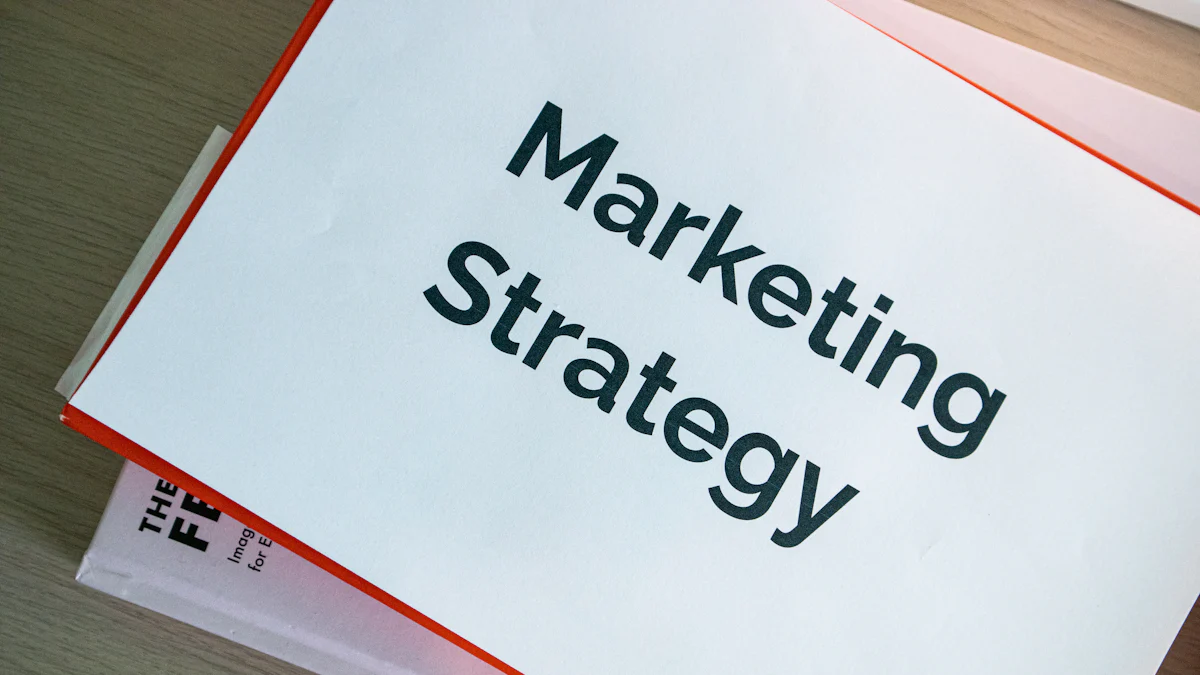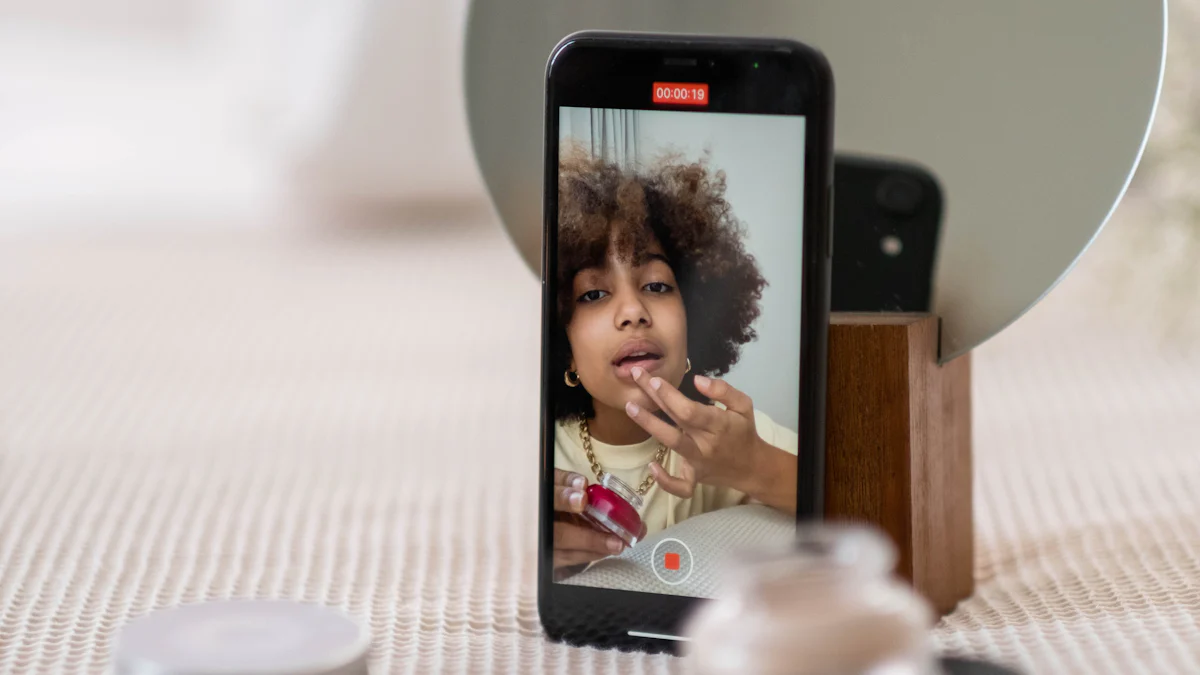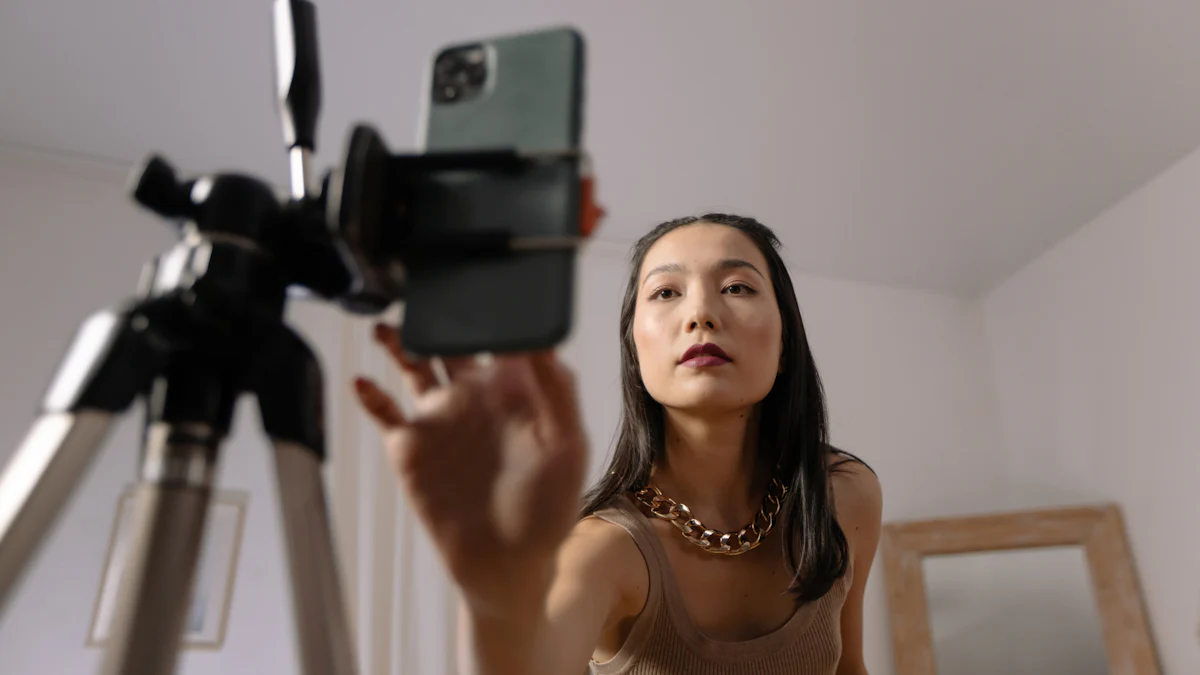Influencer Marketing ROI Trends to Shape 2025 Success

Influencer marketing ROI has become a game-changer for businesses aiming to thrive in 2025. With 70% of marketers already measuring ROI, the pressure to maximize returns has never been higher. Emerging trends like micro-influencers and AI-driven analytics are reshaping how brands approach influencer engagement. These shifts demand that you adapt quickly to stay ahead of competitors.
To succeed, you must focus on strategies that deliver measurable outcomes. For example, businesses are now earning an average of $6.50 for every $1 spent on influencer campaigns. By staying updated on how to measure influencer ROI and leveraging innovative tools, you can ensure your campaigns remain impactful and cost-effective.
Emerging Influencer Marketing Trends

Performance-Based Models
The rise of pay-for-performance influencer campaigns.
Performance-based influencer marketing is transforming how brands approach partnerships. Instead of paying influencers upfront, you can now tie compensation directly to measurable results. This model ensures that your investment delivers tangible outcomes, such as increased sales or engagement.
Many brands have already seen success with this approach:
- Adidas collaborated with influencers like Selena Gomez for the #MyNeoShoot campaign, achieving a 24.2% sales increase.
- Bonobos boosted sales by partnering with influencers for their Summer Collection.
- LiveGlam generates over $20 million annually through performance-based influencer marketing.
By adopting this model, you can focus on measurable results while maximizing your return on investment.
How brands are tying compensation to measurable outcomes.
Brands are increasingly using metrics like conversions, clicks, and sales to determine influencer payouts. This ensures that every dollar spent aligns with your campaign goals. For example, you can set up affiliate links or unique discount codes to track performance. This approach not only drives accountability but also helps you identify high-performing influencers for future collaborations.
AI-Driven Analytics
Leveraging AI to predict campaign success and optimize ROI.
Artificial intelligence is revolutionizing influencer marketing trends by helping you predict campaign outcomes with precision. AI tools analyze data to forecast engagement, content performance, and audience sentiment. For instance, Adidas used AI to tailor influencer campaigns, resulting in a 25% engagement boost. Similarly, a beauty brand leveraged natural language processing (NLP) to analyze social media discussions, increasing engagement by 30% and cutting campaign costs by 20%.
| AI Insight | Marketer Benefit |
|---|---|
| Engagement predictions | Smarter budgeting |
| Content performance analysis | Better content strategy |
| Audience sentiment tracking | Targeted messaging |
By using AI, you can make data-driven decisions that optimize your ROI and deliver measurable results.
Real-time data analysis for better decision-making.
AI-powered platforms like Creator.co and Keyhole provide real-time analytics, enabling you to track campaign performance as it unfolds. These tools offer insights into reach, engagement, and ROI, allowing you to adjust strategies on the fly. For example, Creator.co automates outreach and manages campaigns with micro-influencers, while Keyhole tracks branded hashtags and influencer activities. With these tools, you can ensure your campaigns stay on track and deliver the desired results.
Micro-Influencer Effectiveness
Why micro-influencers are delivering higher engagement and ROI.
Micro-influencers are becoming a cornerstone of influencer marketing trends due to their ability to connect authentically with niche audiences. Their smaller follower base allows them to engage more frequently and meaningfully. In the U.S., Instagram influencers with 1,000–5,000 followers achieve an average engagement rate of 4.6%, far surpassing macro-influencers. This targeted engagement translates into measurable results, making micro-influencer partnerships a smart investment for your brand.
The cost-effectiveness of working with niche creators.
Micro-influencers offer a budget-friendly alternative to traditional influencers. They charge significantly less while delivering high engagement rates. By collaborating with them, you can maintain control over your marketing budget and still achieve substantial results. Additionally, their authentic connection with followers enhances the value of your campaigns. This makes micro-influencer partnerships a cost-effective way to maximize ROI and reach your target audience.
How to Measure Influencer ROI
Key Performance Indicators (KPIs)
Engagement rates, conversions, and cost-per-acquisition benchmarks.
Understanding how to measure influencer ROI starts with identifying the right KPIs. These metrics help you evaluate the effectiveness of your campaigns and ensure your investment drives meaningful results. Key indicators include engagement rates, conversions, and cost-per-acquisition benchmarks. Engagement rates measure how actively audiences interact with influencer content, while conversions track direct actions like purchases or sign-ups. Cost-per-acquisition benchmarks reveal how efficiently your campaigns generate revenue.
Here’s a breakdown of essential KPIs:
| KPI | Description |
|---|---|
| Reach and Impressions | Metrics that indicate how many people have seen the content, essential for understanding audience exposure. |
| Earned Media Value (EMV) | Assigns advertising value to earned coverage, helping quantify the impact of influencer campaigns. |
| Engagement | Measures interactions (likes, comments, shares) that indicate audience interest and involvement. |
| Conversions | Tracks direct sales or actions taken as a result of the campaign, crucial for assessing financial ROI. |
| Brand Sentiment | Evaluates public perception and feelings towards the brand, important for understanding overall impact. |
Tracking conversions is particularly critical for measuring ROI. By monitoring these KPIs, you can identify which influencers and strategies deliver the best results for your brand.
Tracking brand awareness and sentiment as part of ROI.
Beyond direct sales, influencer campaigns often aim to build brand awareness and improve sentiment. Measuring ROI in these areas involves analyzing metrics like reach, impressions, and audience sentiment. For example, you can use social listening tools to gauge how audiences perceive your brand after a campaign. Positive sentiment boosts your reputation and can lead to long-term revenue growth. By focusing on these metrics, you ensure your campaigns create both immediate and lasting value.
Industry Standards
Average ROI benchmarks across industries.
When measuring ROI, it’s helpful to compare your performance to industry benchmarks. On average, businesses earn $6.50 for every $1 spent on influencer marketing. Top-performing brands achieve even greater returns, with 13% seeing an ROI of $20 or more. Nano-influencers often deliver the highest engagement rates, outperforming macro-influencers by 213%. These benchmarks provide a clear picture of what success looks like and help you set realistic goals for your campaigns.
How to compare your results to competitors.
To stay competitive, you need to evaluate your results against industry standards. Start by calculating ROI using this formula:
(Total Revenue – Total Costs) / Total Costs x 100
Next, use influencer analytics tools to gain deeper insights into your campaigns. Align your efforts with business goals to maximize revenue and optimize performance. Finally, leverage industry benchmarks to refine your strategies and outperform competitors. By following these steps, you can confidently measure your success and improve future campaigns.
Strategies for Success in Influencer Marketing
Leveraging Technology
Tools and platforms to streamline influencer marketing efforts.
To stay ahead in influencer marketing, you need tools that simplify campaign management and deliver actionable insights. Platforms like Sprout Social and Creator.co help you manage campaigns efficiently while providing detailed ROI analytics. Promoty and Traackr allow you to discover influencers with strong brand affinity and optimize performance. Aspire and Upfluence use AI to streamline influencer selection and strategy. These tools ensure you connect with the right creators and track your campaigns effectively.
By leveraging these platforms, you can focus on building impactful influencer marketing strategies while saving time and resources.
Automating campaign management for efficiency.
Automation is a game-changer for influencer marketing. It reduces manual tasks, allowing you to focus on strategy and creativity. For instance, 75% of marketers report that automation frees up time for high-value activities. Tools like Keyhole and Brandwatch provide real-time analytics, helping you adjust campaigns for better results. Automation also improves response times by up to 30%, ensuring your campaigns remain agile and effective.
By automating repetitive tasks, you can reallocate your budget to strategic initiatives, maximizing your ROI.
Building Long-Term Partnerships
The benefits of fostering ongoing relationships with influencers.
Long-term partnerships with influencers create trust and authenticity. When influencers consistently promote your brand, their audience perceives the relationship as genuine. This leads to higher conversions and stronger brand loyalty. Additionally, influencers often offer better rates for ongoing collaborations, saving you money over time.
How long-term collaborations improve authenticity and ROI.
Influencers who align with your brand values become natural advocates. Their authentic connection resonates with their audience, enhancing your campaign’s credibility. These partnerships also provide consistent exposure, reinforcing your brand message and driving better performance-based partnerships.
Optimizing Content
Creating content that aligns with audience preferences.
To create impactful content, you must understand your audience. Conduct market research to analyze demographics and behaviors. Use analytics tools to identify preferences and pain points. Define your brand’s core values and ensure your content reflects them. By aligning your messaging with audience expectations, you can deliver trend-driven strategies that resonate deeply.
Repurposing influencer content across multiple channels.
Repurposing influencer-generated content (IGC) amplifies your reach and impact. Use IGC for paid ads to boost purchase outcomes by 82%. Share it across platforms to create a cohesive message that reinforces your brand identity. This approach not only enhances consistency but also improves performance-based partnerships by maximizing the value of your content.
Future Outlook for Influencer Marketing

Virtual Influencers
The growing role of AI-generated influencers in campaigns.
Virtual influencers are revolutionizing marketing by offering brands a creative and consistent way to connect with audiences. These AI-generated personalities interact with followers just like human influencers, endorsing products and engaging in conversations. With 58% of users following at least one virtual influencer, their presence is undeniable. They provide you with complete control over messaging, ensuring alignment with your brand’s vision. By leveraging these digital personas, you can deliver unique campaigns that captivate your audience and drive measurable results.
Ethical considerations and ROI potential.
While virtual influencers offer exciting opportunities, they also raise ethical concerns. AI can blur the line between authenticity and automation, potentially eroding trust. Misleading representations, such as AI photo-retouching, can harm your audience’s perception and promote unrealistic standards. To maintain credibility, you must disclose AI involvement in campaigns. Transparency builds trust and ensures your brand remains ethical. When handled responsibly, virtual influencers can deliver strong ROI while preserving consumer confidence.
Metaverse Opportunities
How brands are leveraging the metaverse for influencer marketing.
The metaverse is opening new doors for influencer marketing. You can collaborate with influencers to create branded virtual worlds, host events, or showcase products in immersive environments. Influencers can feature your offerings in their streams, run contests, or even conduct interviews with your team. These strategies allow you to engage users in innovative ways, creating memorable experiences that strengthen your brand’s presence.
Measuring ROI in virtual environments.
Tracking ROI in the metaverse requires specific metrics. Start by monitoring active users to gauge audience reach. Measure session duration to understand engagement levels. Analyze user interactions to assess campaign effectiveness. Additionally, evaluate brand awareness through social media mentions and website traffic. By focusing on these metrics, you can refine your strategies and achieve better results in virtual spaces.
Sustainability and Social Impact
The demand for influencers promoting sustainable practices.
Consumers increasingly value sustainability, and influencers play a key role in promoting eco-friendly lifestyles. By partnering with influencers who advocate for sustainable practices, you can enhance your brand’s reputation and inspire positive change. These collaborations not only increase awareness but also align your brand with values that resonate deeply with modern audiences.
How aligning with social causes can boost ROI.
Supporting social causes through influencer marketing strengthens trust and expands your reach. Collaborations with nonprofits and influencers drive higher engagement, leading to increased sales and customer loyalty. When you align your campaigns with meaningful causes, you create authentic connections that deliver long-term results for your brand.
The future of influencer marketing lies in your ability to adapt and innovate. By focusing on micro and nano-influencers, you can achieve authentic engagement and connect with niche markets. Tracking engagement metrics instead of follower counts ensures you measure ROI effectively. Leveraging AI tools enhances efficiency, reduces costs, and optimizes content creation.
To stay competitive, prioritize video content with creative storytelling and short-form formats. Aligning with social causes and sustainability builds trust with conscious consumers. Long-term influencer partnerships strengthen loyalty and deepen connections. Embrace these strategies to maximize your ROI and lead the way in 2025.
FAQ
What is the best way to calculate influencer marketing ROI?
Use this formula:
(Total Revenue – Total Costs) / Total Costs x 100.
Track metrics like conversions, engagement, and cost-per-acquisition. Tools like Creator.co or Keyhole simplify tracking and provide real-time insights. This ensures you measure ROI accurately and refine your campaigns for better results.
How do micro-influencers compare to macro-influencers in ROI?
Micro-influencers deliver higher engagement rates and cost less. Their niche audiences trust them more, leading to better conversions. For example, influencers with 1,000–5,000 followers achieve a 4.6% engagement rate, outperforming macro-influencers. Partnering with them maximizes your ROI while staying budget-friendly.
Are virtual influencers worth the investment?
Yes, virtual influencers offer creative control and consistent messaging. They engage audiences effectively and reduce risks associated with human influencers. However, disclose AI involvement to maintain trust. When used ethically, virtual influencers can deliver strong ROI and unique campaign opportunities.
How can AI improve influencer marketing campaigns?
AI predicts campaign success by analyzing data like engagement trends and audience sentiment. It optimizes content strategies and tracks real-time performance. Tools like Aspire and Upfluence streamline influencer selection. By leveraging AI, you save time, reduce costs, and maximize ROI.
Why should you focus on long-term influencer partnerships?
Long-term collaborations build trust and authenticity. Influencers become genuine advocates for your brand, leading to stronger audience connections. These partnerships also provide consistent exposure and better rates, improving your ROI over time. Invest in ongoing relationships to create lasting value.
See Also
Essential Tactics for Enhancing Influencer Marketing ROI 2025
Key Approaches to Increase Influencer Marketing ROI 2025
Simplified Methods for Evaluating Influencer Marketing ROI 2025
Best Analytics Tools for Influencer Marketing in 2025
Ten Key Content Marketing Trends Influencing Brand Awareness 2025
